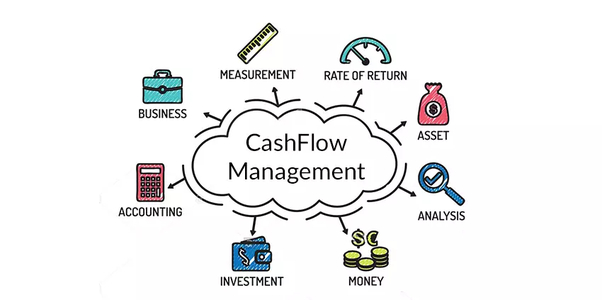Starting a business in California means diving into a diverse and vibrant marketplace with ample opportunities but also unique challenges. Understanding California’s business landscape is crucial because it’s a dynamic state with a large economy and a culturally diverse population. From Silicon Valley’s tech prowess to Hollywood’s entertainment industry, California offers a wide range of sectors to explore and compete in.
However, navigating California’s regulations, taxes, and competition requires careful planning. The state has strict labour laws, environmental regulations, and tax requirements that can significantly impact your business operations. Additionally, you need to get a business license in California. The cost of living and doing business in California is relatively high compared to other states. Therefore, grasping these intricacies is essential for successfully launching and sustaining a business here.
Table of Contents
Research and Planning
Research and planning are like building blocks for starting your business in California. Start by digging deep into the market to see what people need and what other businesses are doing. This helps you find your niche and figure out how to stand out. In California, the market can be really diverse, so understanding who your potential customers are and what they want is super important.
Once you’ve got a good grasp of the market, it’s time to look at the rules and regulations. Every business in California needs to play by the rules, like getting the right permits and licenses. You’ll also want to understand taxes and any other legal stuff that might affect your business. This might seem boring, but it’s crucial to keep your business on the right track and avoid any surprises down the road.
Now, let’s talk about your business plan. This is like a roadmap for your business journey. It lays out your goals, how you’ll reach them, and how much money you expect to make. Think of it as your business’s blueprint. Your plan should reflect what you’ve learned from your research and show how you’ll make your business thrive in California’s bustling market. With solid research and a clear plan, you’re setting yourself up for success as you take your first steps into the world of business in California.
Creating a Business Plan
Creating a business plan is like mapping out your journey before you set off on an adventure. It’s a document that outlines your business idea, goals, and how you’ll achieve them. Start by describing your business concept and what makes it unique. Then, dive into details about your target market. Who are your customers, and why will they choose you?
Next, outline your strategies for marketing, sales, and operations. How will you promote your business and attract customers? What will your day-to-day operations look like? This section helps you visualize how your business will run in the real world.
Don’t forget about the numbers! Your business plan should include financial projections, like sales forecasts and expenses. This helps you understand if your business idea is financially viable and how much funding you might need to get started.
Lastly, your business plan should be flexible. Markets change, and unexpected things can happen, so it’s essential to revisit and update your plan regularly. With a well-thought-out business plan, you’ll have a roadmap to guide you through the ups and downs of starting and growing your business in California.
Choosing a Business Structure
Choosing the right business structure is like picking the best foundation for your house—it provides stability and support for your venture. In California, you have several options to choose from, including sole proprietorship, partnership, limited liability company (LLC), and corporation.
Sole proprietorship is the simplest and most common structure, where you and your business are essentially one and the same. Partnerships involve two or more people sharing ownership and responsibility for the business.
LLCs offer flexibility and liability protection, shielding your personal assets from business debts and lawsuits. Corporations, on the other hand, provide even greater liability protection but come with more complex legal requirements.
When deciding, consider factors like liability protection, taxation, and administrative burdens. Each structure has its pros and cons, so it’s essential to weigh them carefully and choose the one that best suits your business goals and circumstances. Consulting with legal and financial professionals can also help ensure you make the right choice for your business in California.
Registering Your Business
Registering your business is like giving it an official identity. It’s the process of making your business recognised and legal in the eyes of the government. In California, this typically involves choosing a business name and registering it with the appropriate state and local authorities.
First, you’ll need to pick a name that’s unique and not already in use by another business. Then, you’ll register that name with the California Secretary of State’s office. This step ensures that no one else can use your business name in the state.
Depending on the type of business you’re starting and where it’s located, you may also need to obtain licenses or permits from local government agencies. These could include health permits, zoning permits, or professional licenses, depending on the nature of your business.
Registering your business isn’t just about paperwork. It’s about establishing your business’s legitimacy and protecting its name and reputation. By completing this process correctly, you’ll be on your way to operating your business legally and confidently in California.
Tax Obligations
Understanding your tax obligations is essential for any business in California. It’s like knowing the rules of the road before you start driving. In California, businesses are subject to various taxes, including state income tax, sales tax, and employment taxes.
State income tax is levied on business profits, and the rate varies depending on the type of business structure you choose. Sole proprietors report their business income on their personal tax returns, while corporations and LLCs file separate tax returns.
Sales tax is charged on most goods and some services sold in California. If your business sells taxable goods or services, you’ll need to register with the California Department of Tax and Fee Administration (CDTFA) and collect sales tax from your customers.
If you have employees, you’ll also need to withhold and pay employment taxes, including federal and state income tax, Social Security tax, and Medicare tax. Additionally, you’ll need to report and pay unemployment insurance taxes to the California Employment Development Department (EDD).
Staying compliant with tax obligations is crucial to avoid penalties and keep your business running smoothly. Consider working with a tax professional to ensure you understand your responsibilities and meet all filing deadlines in California.
Financing Your Business
One option is to bootstrap your business, using personal savings or funds from friends and family to cover startup costs. This can give you full control over your business but may limit your resources.
Another option is to seek outside funding, such as small business loans from banks or credit unions. These loans can provide the capital you need to launch or grow your business, but they often require a solid business plan and collateral.
In California, you can also explore government programs, grants, and incentives designed to support small businesses. These can include grants for specific industries or regions, as well as tax credits for hiring and investment.
Additionally, you might consider alternative financing options like crowdfunding or venture capital. Crowdfunding allows you to raise funds from a large number of people online, while venture capital involves investors providing funding in exchange for equity in your business.
Ultimately, the best financing option for your business will depend on your unique circumstances, goals, and financial needs. By exploring all your options and carefully weighing the pros and cons, you can find the right path to finance your business in California.
Location and Workspace
Choosing the right location and workspace for your business is like finding the perfect spot for a tree to grow. In California, where you set up shop can greatly impact your success.
Consider factors like foot traffic, accessibility, and demographics when choosing a location. Whether you’re opening a retail store, restaurant, or office, being in a busy area with potential customers nearby can drive sales and visibility.
Next, think about the type of workspace that suits your business needs. Do you need a storefront, a dedicated office space, or can you work remotely? Each option has its benefits and considerations, such as cost, amenities, and flexibility.
In California, where real estate prices can be high, you’ll also want to factor in leasing or buying costs. Explore different neighborhoods and commercial districts to find the best fit for your budget and business goals.
Lastly, consider the future growth and scalability of your business when choosing a location and workspace. Will you need to expand or hire more employees in the future? Look for a space that can accommodate your long-term plans and adapt to your evolving needs.
Marketing and Branding
Marketing and branding are like shining a spotlight on your business. They help you stand out and attract customers in California’s bustling marketplace.
Start by defining your brand identity. Who you are, what you stand for, and what makes you unique. Your brand should reflect your values, personality, and the promise you make to your customers.
Next, develop a marketing strategy tailored to reach your target audience in California. This could include a mix of online and offline tactics, such as social media marketing, email campaigns, advertising, and networking events.
Create compelling content that tells your story and engages your audience. Whether it’s blog posts, videos, or social media posts, focus on providing value and building relationships with your customers.
Measure your marketing efforts and track your results to see what’s working and what’s not. This allows you to adjust your strategy and optimize your marketing efforts for maximum impact.
By investing in marketing and branding, you can build awareness, credibility, and loyalty for your business in California, helping you attract and retain customers in a competitive market.
Launching Your Business
Start by creating buzz and excitement around your business. Announce your launch date and build anticipation through social media teasers, email newsletters, and word-of-mouth marketing. Plan a memorable launch event or promotion to celebrate your grand opening. This could include special discounts, giveaways, or exclusive offers to entice customers to visit your business.
Ensure everything is in place for a smooth opening day. This includes stocking inventory, training staff, and testing systems to ensure everything runs seamlessly. Once you’re ready, officially open your doors and welcome your first customers with open arms. Be prepared to provide exceptional service and leave a lasting impression to encourage repeat business and positive word-of-mouth.
After your launch, continue to promote your business and engage with your audience to keep the momentum going. This could include hosting follow-up events, running promotions, and collecting feedback to improve your offerings. By launching your business with enthusiasm and strategic planning, you can make a memorable entrance into the California market and set the stage for long-term success.
Managing and Growing Your Business
Start by establishing efficient day-to-day operations. This includes managing inventory, handling finances, and overseeing staff to ensure everything runs smoothly.
Stay connected with your customers and listen to their feedback. Use surveys, reviews, and social media to gather insights and make improvements to your products or services. Focus on expanding your customer base and reaching new markets. This could involve launching new marketing campaigns, exploring partnerships, or expanding your online presence.
Invest in your team by providing training and opportunities for growth. Happy and motivated employees are essential for delivering exceptional service and driving business success. Keep an eye on industry trends and market changes to stay ahead of the curve. Adapt your strategies and offerings as needed to remain competitive in California’s dynamic marketplace.
Celebrate your successes and learn from your failures. Reflect on what’s working and what can be improved to continuously evolve and grow your business. By effectively managing your business operations and proactively seeking opportunities for growth, you can cultivate a thriving and successful business in California.
Conclusion
Starting a business in California brings both opportunities and challenges. From tech hubs like Silicon Valley to vibrant cities like Los Angeles, California offers diverse markets for entrepreneurs.
Research well and make a detailed plan. Choose the right business structure and register your business properly. Managing taxes and finances is important too. Finding the right location and marketing your business effectively can help you stand out.
After launching, focus on managing and growing your business. Stay connected with your customers and keep an eye on industry trends. With hard work and smart decisions, your business can thrive in California’s dynamic environment.








Pingback: How to Get a Business License in California
Pingback: How Much Is a Business License in California
Pingback: How to Register a Business Name in California